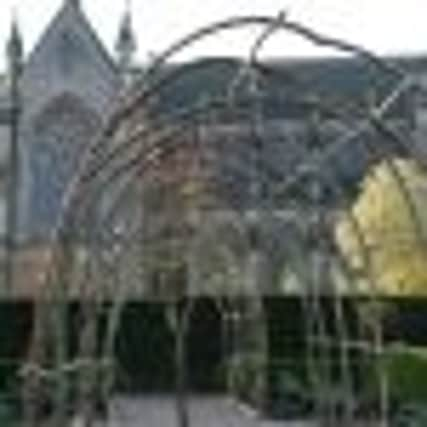Everyone as busy as bees in Arundel Castle gardens


In Victorian times pollination would have been done by hand, often by using a soft rabbit’s tail on a stick to gently move pollen from flower to flower like a visiting bumble bee, we also use a soft cosmetic brush (currently on loan from someone’s make-up bag, my wife’s !) rather than a rabbit’s tail to ensure full pollination.
It is fantastic at this time of year in our Tropical Glasshouse, especially on a cold day, as one of our most attractive plants is flowering at the moment, this is the Strelitzia reginae, otherwise known as the or Bird of Paradise or Crane Flower.
Advertisement
Hide AdAdvertisement
Hide AdThe name was given to commemorate Charlotte of Mecklenburg-Strelitz, Queen Consort and wife of King George III.
The plant was first introduced into Europe from South Africa in around 1773, which is when it was recorded by the Royal Botanical Gardens at Kew.
In California it is known as the official flower for Los Angeles, where they are commonly grown.
In South Africa more recently they have been known as Mandela’s Gold, this exotic flower commands a good price from European florist.
Advertisement
Hide AdAdvertisement
Hide AdYou can grow from seed, although they are slow growing and won’t flower for at least three to five years.
They are best grown in sunny and warm areas and they require regular feeding with a slow release fertiliser.
They are sensitive to cold and need to be sheltered from frost and so people throughout Britain grow them as an indoor plant, especially for conservatories where there’s plenty of light.
The new cut flower garden design is well on it’s with the introduction of hazel and ash arches, these were harvested from the estate woods by the garden team and bent into shape.
Advertisement
Hide AdAdvertisement
Hide AdThe arch will form the support for our sweet peas and clematis that we will grow to climb up giving another unusual feature in the walled garden for our visitors to enjoy in the spring and summer months.
It amazes me how time flies, it is already time for the annual seed swap here in Arundel. Sunday, February 24 from 1pm-3.30pm at the Norfolk Hall, Mill Road, Arundel.
Come along and swap seeds or plants. If you don’t have any to swap, seeds can be purchased for a minimal donation.
A few tips from the castle garden team:
Divide and plant snowdrops
Prepare seed beds for vegetables
Prick out and pot up seedlings sown last month
Finish pruning fruit
Prepare ground for making new lawns in the spring
Happy Gardening!
Arundel Castle opens on Friday, 29th March and for further details on opening times, entry fees, tours and other events please go to our website at www.arundelcastle.org.
Martin Duncan - Head gardener Arundel Castle